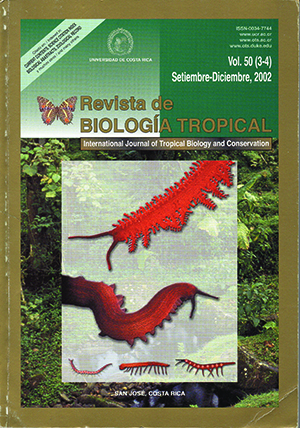Abstract
Astudy of the most important polliniferous plants for European and Africanized honeybees (Apis mel - lifera L.) was made in Quintana Roo state. Comparisons were made between the plants visited by both bee types in order to determine whether there were qualitative or quantitative differences in their choice of plant species. Also some foraging strategies of the honeybees were analysed. Pollen from pollen load samples was acetolysed and mounted on slides. Subsequently the pollen grains were identified, counted and photographed. A total of 206 pollen load samples were collected at Palmas and St. Teresa during two years. The most frequent species in the pollen load samples from European and Africanized honeybees were Cecropia peltata, Metopium brownei, Lonchocarpus sp. 2, Viguiera dentata, Eragrostis sp. 1, Bursera simaruba and Eupatorium albicaule. Both types of honey bees show a high reliance on pollen from only a few species, the first five named above comprised around 50% of all the mean percentage frequencies. Families that contributed with the largest number of pollen species were Fabaceae, Asteraceae, Boraginaceae, Convolvulaceae, Euphorbiaceae, Sapindaceae, Poaceae, Myrtaceae, Sapotaceae and Tiliaceae. C. peltata, Trema micrantha, B. simaruba, Eugenia sp. 1, Thouinia canesceras, Pouteria sp. 1, Mimosa bahamensis and V. dentata, were the pollen species with the largest percentages of occurrence in both European and Africanized bee pollen load samples, and also represent a “longterm” food resources during the year.##plugins.facebook.comentarios##

This work is licensed under a Creative Commons Attribution 4.0 International License.
Copyright (c) 2002 Revista de Biología Tropical
Downloads
Download data is not yet available.


